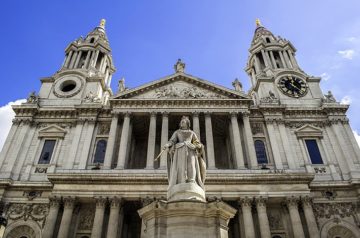Michael Prodger at the New Statesman:
 If there is one part of one building that is quintessential Christopher Wren it is not the dome of St Paul’s Cathedral, or the ceremonial river frontage of the Royal Naval Hospital at Greenwich, nor even any of the infinitely various steeples of his city churches, but the base of the Monument.
If there is one part of one building that is quintessential Christopher Wren it is not the dome of St Paul’s Cathedral, or the ceremonial river frontage of the Royal Naval Hospital at Greenwich, nor even any of the infinitely various steeples of his city churches, but the base of the Monument.
The structure, a fluted column erected to commemorate the Great Fire of London, was built between 1671 and 1677 and stands both 202 feet high and 202 feet from Pudding Lane, the place where the conflagration started. The gaze of passers-by is inevitably drawn upwards to the flaming golden urn at the top that represents both the disaster and the city’s resurgence. But for Wren and his co-designer, Robert Hooke, mere memorialising was just one part of their intention. They constructed the Monument to be both a zenith telescope and a laboratory: looking up its tubular interior they could observe and measure the position of the stars (the topping urn was hinged so that it could be opened to the sky); looking down it they could experiment with pendulums and gravity. The two men would collate and analyse their findings in a research space beneath the column.
more here.
